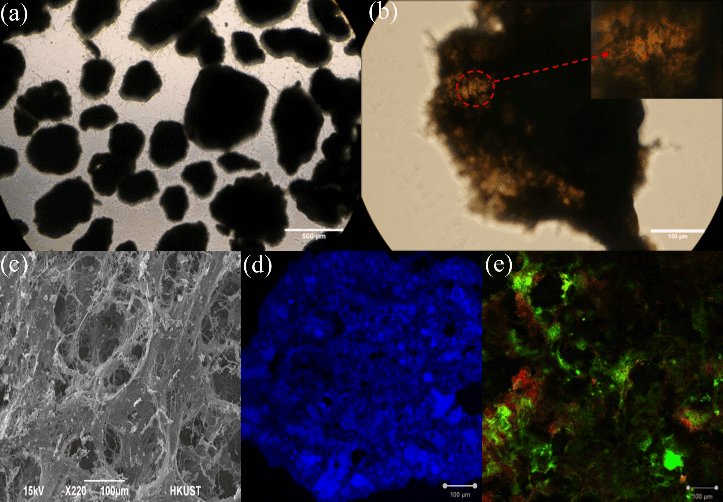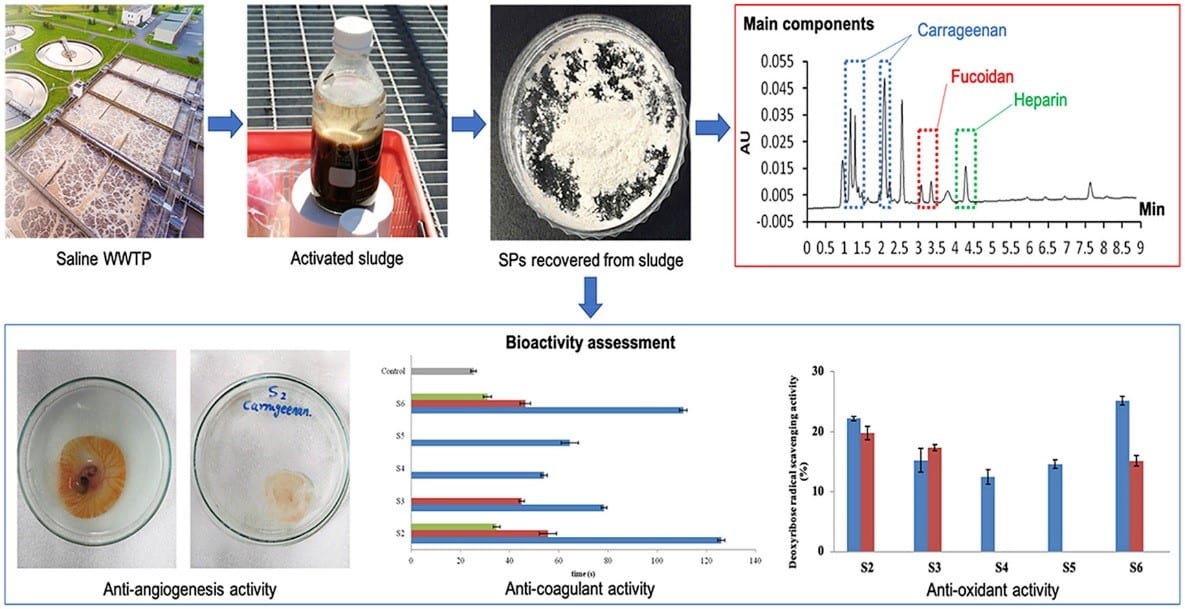Sulfate-laden wastewaters are extensively generated through natural and anthropogenic activities. Urbanization and population density will continuously increase in coastal cities according to current demographic trends. By the end of 2025, the number of people living within 200 km from the coast will account for 75% of the world’s population, which will further intensify the production of sulfate-laden wastewaters in coastal regions. Against this background, cost-effective and functional purification/treatment technologies for sulfate/seawater contaminated wastes are inevitable. Sulfur cycle associated resources and energy recoveries from the treatment of waste streams are attracting more and more attention currently.
-Granular sludge development
Sulfate reduction, Autotrophic denitrification and Nitrification Integrated (SANI®) process has been developed in Hong Kong for the treatment of saline sewage resulted from seawater toilet flushing. The sulfate-reducing up-flow sludge bed (SRUSB) reactor acts as the central bioreactor in the SANI process responsible for organic conversion and provision of sufficient dissolved sulfide for subsequent nitrogen removal. In order to make the SRUSB reactor compact and maintain high treatment capacity, granulation of sulfate-reducing sludge in the SRUSB is developed.

Morphology of the SRB granules
-High-Value Product Recovery from Waste Stream
With population growth stress and an increasing need for sustainable development, wastewater treatment is considered a new and significant platform for resource recovery. Current sewage treatment technologies rely on biological conversions and tend to produce large amounts of sludge, causing a heavy burden for the whole process operation. Retrieving products from waste sludge with high and particular value carry the most potential for resource recovery. Bioactive sulfated polysaccharides (SPs) were found and confirmed, both in the laboratory and in full-scale waste activated sludge (WAS). SPs are popular within the broad industry and serve as medical dressings and pharmaceutical intermediates. WAS-based SPs extraction and recovery are systematically studied in our laboratory. Bioactivity of SPs derived from activated sludge opens a door not only for scientific research on SPs biosynthetic pathways in microbes, but also for recovery technology of these potential high value compounds.
 |
 |
Recovery of sulfated polysaccharides (SPs) and activity validation
